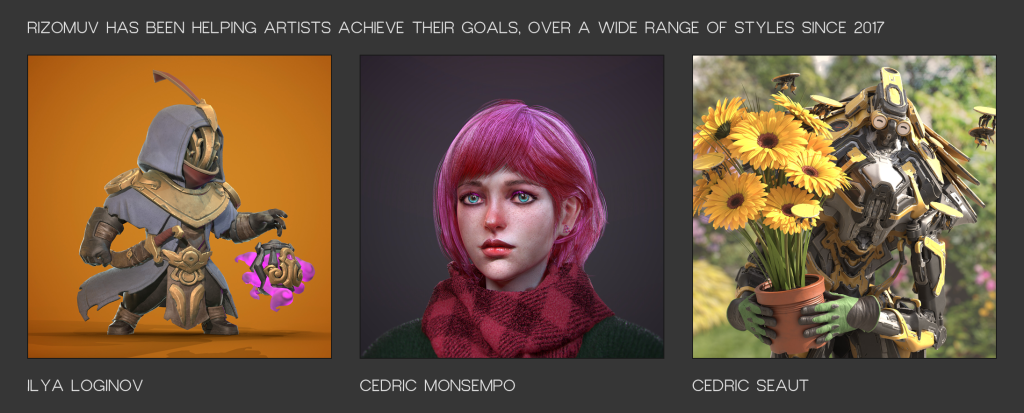RizomUV 2022.1 Has Arrived
Established in 2016, Rizom-Lab‘s goal is to produce the fastest and most intuitive UV unwrapping solution. As the name suggests, and with the help of the community, their product RizomUV is always growing and evolving around the needs of its community with fresh new features, whilst still maintaining those all-important quality of life changes. This is embodied in the latest release, RizomUV 2022.1. From UI upgrades and workflow optimization, to new improvements and tools, RizomUV has a plethora of robust features, that will make fast work of challenging unwraps.
Continue reading below to discover all the new features this major update offers:
Python Integration
Up until this point, scripting in RizomUV has been handled with the LUA programming language. Now, in a first step towards closer communication between RizomUV and 3D applications, Python3 has been integrated into the unwrapping software on all platforms. This does not mean that they will no longer have LUA scripting, only that they have the very welcome addition of Python. The Rizom-Lab team has big plans for further Python integration and this inclusion is setting the stage.
Apple Silicon Version
RizomUV for Mac is now distributed using a Universal Build. This means that not only does it run on Intel CPUs, but also Apple』s new ARM based processors such as the powerful M1 chip. This brings welcome support to the Big Sur OS and above using the silicon architecture.
Linux Distro Compatibility
It should be clear at this point that the Rizom-Lab team has made great efforts to ensure better compatibility, and Linux is no different. The Linux version now embeds glibc in the AppImage installer, and is compatible with a wider range of distributions including Centos 7.5.
Planar Projections
In an effort to expand the toolset further, RizomUV now has the capability for Planar Projections. UVs can be projected along the world space XYZ directions or, a custom plane can be defined based on the normal direction of a selection, or even from the viewport』s orientation.

Default Settings
Default settings can now be defined within preferences, this means that attributes such as Scene Units, Texel Density, and Scaling Mode no longer need to be set each time the application is opened. This is a time saving change that is sure to be embraced by the RizomUV community.
Polygon Magic Wand
The Polygon Magic Wand has been reworked in terms of function and presentation. By default, the selection angle can now be informed by the surface normals contained within the imported file.
The Local Angle Visualisation threshold also has a new look, the viewport now displays coloured edges to inform the user of the normal breaking angle. This makes using the Magic Wand tool a much more intuitive experience, and no doubt an improvement to workflow.
Updated 3D Viewport
The 3D Viewport now displays a model with its embedded normals, gone are the faceted surfaces displayed in previous versions of RizomUV. Objects are now viewed as the artist intended, with smooth sweeping surfaces alongside hard edges.
Further Additions
• Island Size histogram / select by size range.
• Scaling Seek Range visualizer, making the packing scaling behaviour more understandable
• Pinned vertex colour can now be customised (see preference dialog)
• Locked Shape mode for groups
• Adaptive Shape mode is now the default for groups
• Tile lock button
• Selected polycount
Pricing & Availability
There are still no current plans to increase RizomUV’s pricing, which has remained static since 2017.
Student licences still have a permanent 70% discount. Indie pricing starts at a monthly €14.95, as does the rent-to-own licence. Annual licences are €149.00. Node-locked and Floating Pro licences begin at €34.90. People needing an SDK licence will need to contact Rizom-Lab directly.